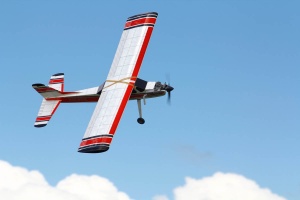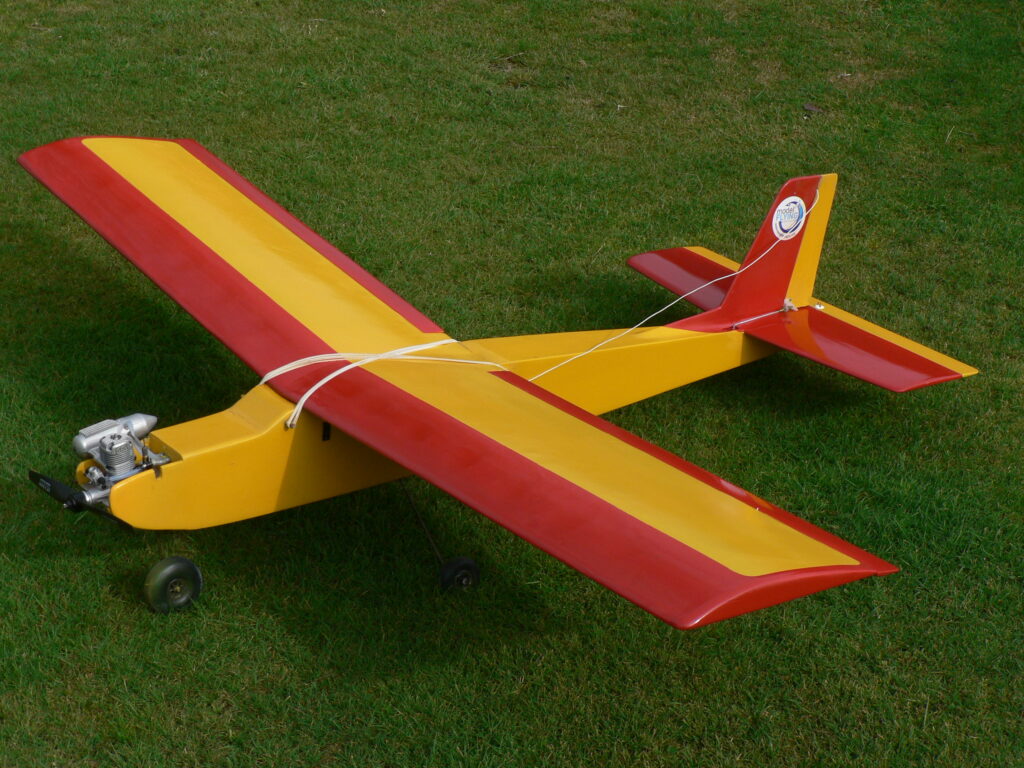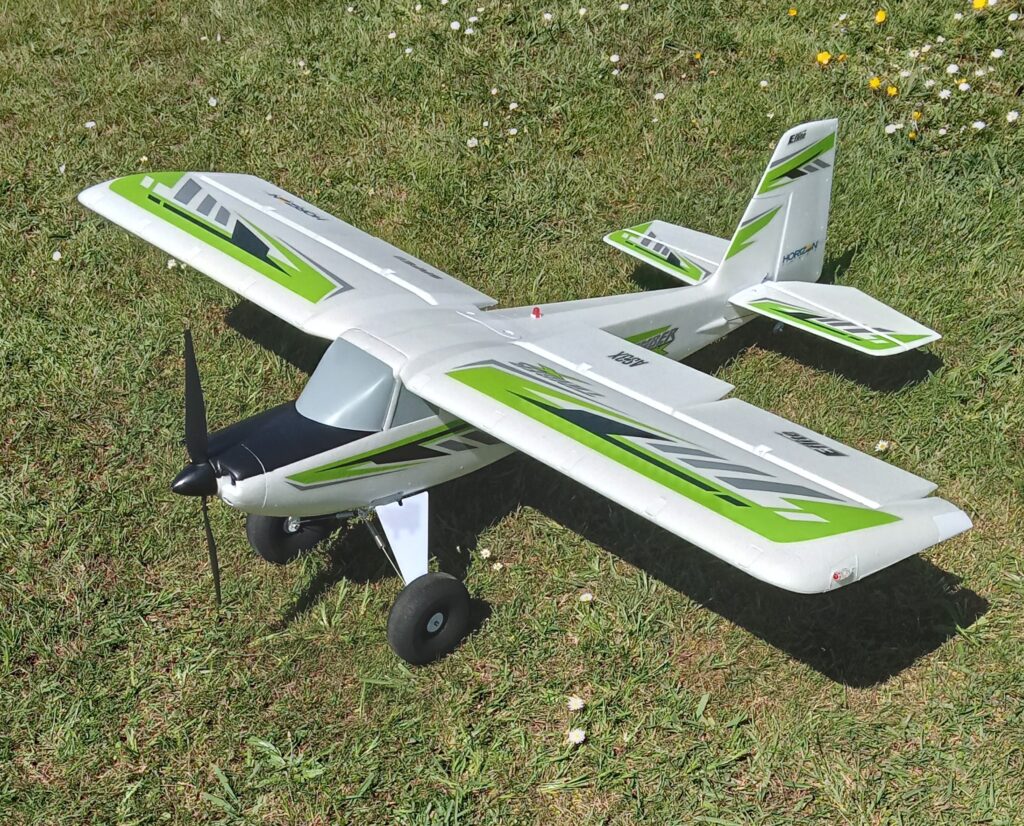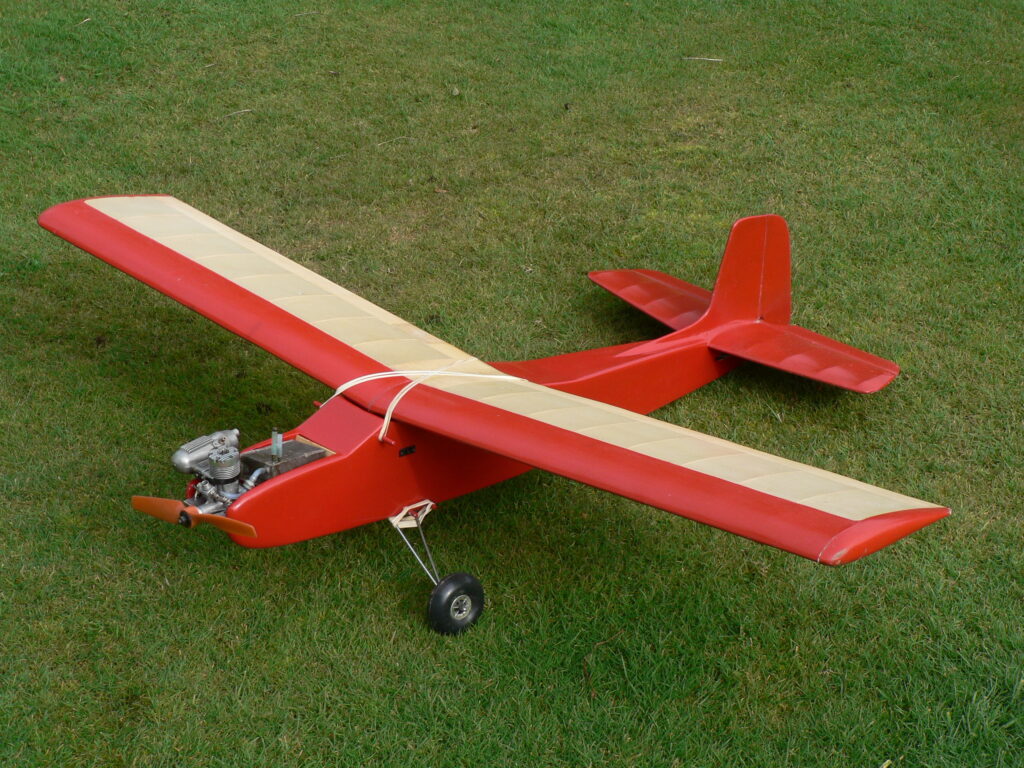Learning to Fly

Typical high wing trainer
Learning to fly is fun and relatively painless. If you put the time into it, you can have your “wings” in as little as 6 weeks and 6 hours flying time.
Come and have a trial flight with an instructor on our dual controlled trainer. Help is available for helicopters, aircraft and drones.

Unless you already have a model and radio we recommend talking to our instructors before doing so. There are several options available. Sometimes the Club has secondhand models available which are suitable for beginners. These have been refurbished and set up and test flown.

The instructor will provide guidance on:
- Choice of model – size, configuration, electric or internal combustion.
- Choice of radio system – There are 2 main control configurations known as “mode 1” and “mode 2”. There is no advantage of one system over another. In the US mode 2 is favoured, whereas in Europe the preference is for mode 1. In NZ and Australia the mix is balanced. In the Rotorua Club, the dominant mode is mode 1. Most students follow the system used by their instructor, however the choice is up to the individual.
- How to set up and trim your model. An untrimmed model is hard to fly and may be unflyable.
- Starting process. Safety with electrics, starting and tuning an IC motor.
- Preparing the student to take his “Wings” test. This is a Civil Aviation requirement and is administered by the club on behalf of Model Flying New Zealand. Members holding a wings badge (or learners flying under the guidance of a certified instructor) are covered by a comprehensive third party liability insurance, in the event that your model hits something.

Training Aids
- “Buddy Box” – this is currently the preferred way to train. Most transmitters have a facility where 2 transmitters can be paired together such that an instructor can take over from the student at any stage. This enables a structured learning process where in the early stages the instructor takes off and lands the model and the student takes over once airborne. As the student’s skills develop, the instructor can provide more access for the student.
- Simulator – there are a number of good computer simulators available. The students transmitter is connected to the computer by a lead plugged into the buddy port. The main purpose of the simulator is to develop instinctive coordination skills Most simulators provide a range of models so that the student can progress from a stable trainer, to a more aerobatic design as his/her skills develop.
Requirement for Wings Badge
From Jan 2012 it became mandatory, if flying solo, to have your wings badge.
If you do not have a Wings badge you will need to fly “under supervision” of an Instructor or Wings badge holder.
If you do not have a wings badge and are flying unsupervised you will NOT be covered by MFNZ insurance.
You will also be contravening the rules of the Rotorua Model Aircraft Club as well as putting pressure on wings badge holders to be constantly supervising members.
Details of the wing badge can be found on the Model Flying New Zealand website Model Flying New Zealand – A Sport. A Hobby. (mfnz.org)
To arrange for instruction please contact any of our Flying Instructors
The wings test
This has 3 components
1. Answering questions relating to safe operation of model aeroplanes – understanding rigging, trim, starting procedures, preflight checks etc.
2. Demonstrating an understanding of club and CAA rules .
3. Demonstrating competence in flying a model aircraft